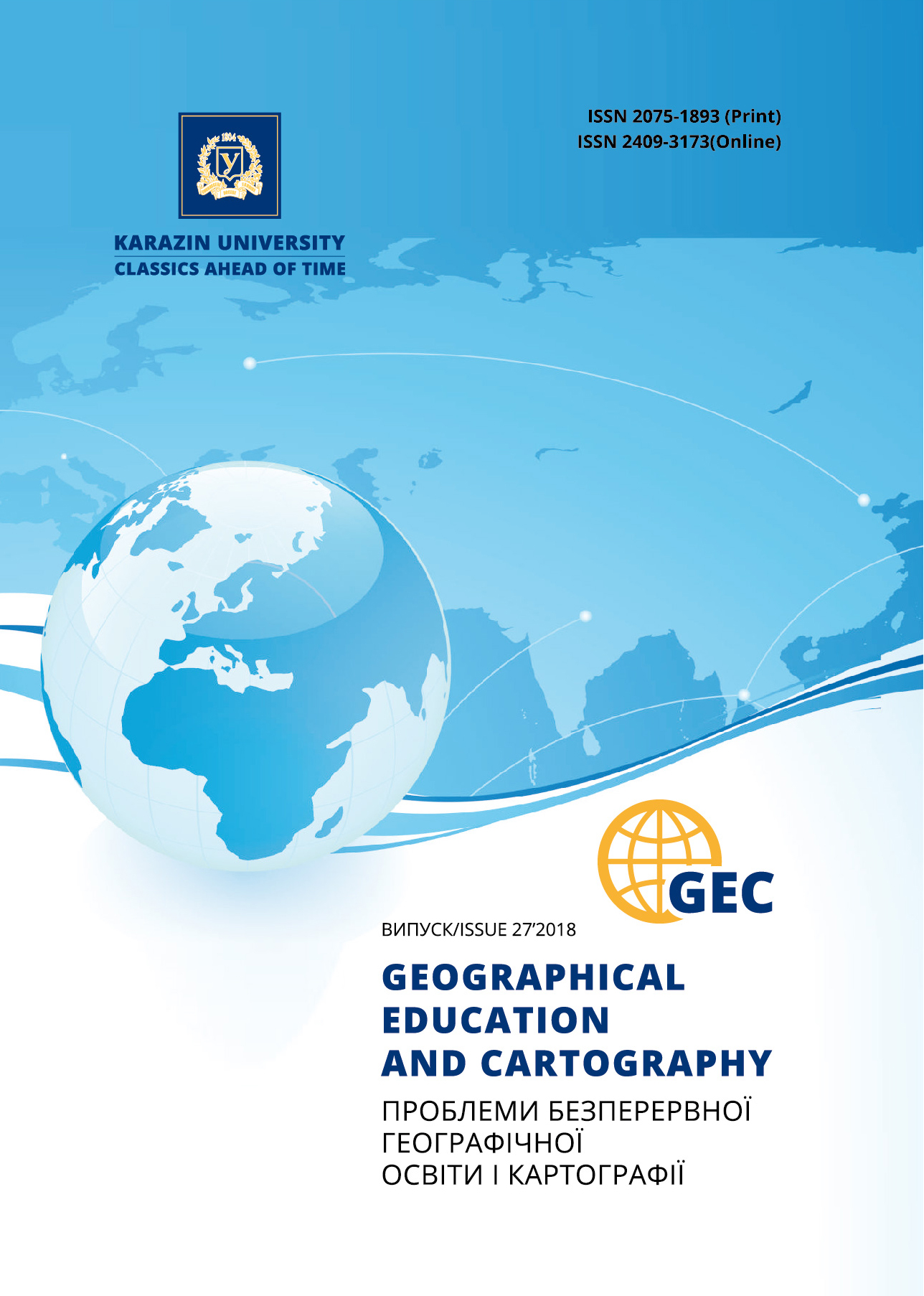The analysis results of toponymic information layer of cultural landscapes: on the example of Polotsk Lake District hydronyms
Abstract
Formulation of the problem. The first attempts to systematically study the features of Belarus toponyms, its toponymic field, date back to the late ХIХ and early ХХ cent. Despite the serious research, there are many gaps in this scientific area. The analysis of the toponymic information layer of cultural landscapes helps to clarify the answers to many questions («Which languages’ speakers participated in the settlement and development of the territory of Belarus?», «What are the settlement vectors?», «How were landscapes developed by various ethnic groups?», etc).
Analysis of recent research and publications. The study of the hydronyms of Belarus Lake District was initiated by A. Sapunov (1893) and Yu. Trusman (1897). The problems of the hydronyms interpretation were actively studied in the 1970-1980’s by E. Katonova, V. Zhuchkevich, I. Yashkin. At the same time, all hydronyms were explained mainly as Baltic and Slavic. One of the first to scientifically substantiate the presence of the Finno-Ugric layer in the hydronyms of the Lake District was O. Hedeman (1930, 1934), J. Kondracki (1938), T. Lehr-Spławiński (1946). In 1980-2000-s there appeared works of G. Ryliuk, V. Isaenko, I. Prokopovich, I. Sharukho, R. Ovchinnikova, A. Manakov, confirming rather complicated picture of the hydronyms of the Lake District, on the territory of which pre-Indo-European, Celtic, Scythian, Finno-Ugric, Baltic, mixed Baltic-Finnish, Balto-Slavic hydronyms were found.
Formation of the purpose of the article. The aim of the article is to analyze the recorded hydronyms, as an element of the toponymic layer of the informational layer of the cultural landscapes in Polotsk Lake District, their semantics and to establish a connection between hydronyms and ethnoses that took part in the settlement and development of the region.
Presentation of the main research material. In the article, based on the published book of I. Sharukho «The Edge of the Century of Europe. The Geographical and Statistical Handbook: Polotsk district. Polotsk. Novopolotsk» (2017). The Handbook fixes 4000 toponyms including 615 hydronyms of the region. Analysis of the toponymic information layer of cultural landscapes can contribute to the reconstruction of the settlement picture in the region from ancient times. Variants of a number of hydronyms origin are considered.
It is established that only 27% of all hydronyms are Slavic, conditionally Slavic, the rest are Finno-Ugric (at least half) and Baltic origin.
Prefixes, hydronyms formants are analyzed. Examples of hydronyms of different origin are given. The edition of the dictionary of hydronyms of Polotsk district is being prepared. Polotsk district refers to territories with increased density of Finno-Ugric hydronyms. Finno-Ugric tribes came to the border in the III and II millennium BC. The most productive bases of Finno-Ugric hydronyms are: RZH-, BAL-, VOL- / VAL-, VAD-, VEL-, VOR-, VET-, KAB-, KAD-, KL-, LAB- / LAP-, PAL- and others. The subsequent waves of migrants transformed the names that existed, brought their elements into the toponymic field. A large number of hypotheses on the origin of names are explained by the complex picture of the settlements of the territory. Baltic hydronyms are names with basics DR- / RD-, DUN-, ZHUR- and others. Only 20-30% hydronyms are Slavic, or transformed Slavs. On the territory of Belarus, Slavic are 15-20% of hydronyms (according to our data - 27%). Hydronyms with prefixes are about 5%. About 100formants are recorded. The most common formants are: -ets (7.6%), -ino, -ina (5.5%), -itsa, -itsy (8%), -k, -ka, -ki (4.7%), -no, -na, -ne, nia (5.5%), -oje (10.9%), -skoje, -skaja, -skij, -skije (5.2%). Slavic are the formants -ov, -ev, -in, -tsy, -etc, -atc, -its, -itsa, -k, -ki/-ka, -evo, -ova, -ina, -ichi. The Welbars (Gothic) are the prefix of the form on –za and the form -ie. Formant –shchynabelongs to Polotsk-Smolensk krivichis.
Conclusions. Polotsk district has very different ages, multilingual beds. Along with the nostratic names, the names of ancient Indo-European, Celtic, Scythian, Gothic, Finno-Ugric, Baltic, Slavic and mixed groups of names were recorded. But most of the names of water objects belong to the Finno-Ugric languages, at least half of them. It is planned to compile a series of formant maps, a separate edition on the hydronymics of the region. A subsequent study of the issues raised in the paper should be coordinated with geographers, historians, archaeologists, linguists.
Downloads
References
Awchynnikava, R.I. (2015). Gidronimy Braslawshchyny: Slownik [Hydronyms of Braslav district: Dictionary]. - Minsk: Vyd. V. Hursik, 120.
Sharuho, I.N. (2005). Formirovanie naselenija i toponimija Belarusi [Population formation and toponymics of Belarus]. Rossijsko-beloruskoe porubezh’e: ustojchivost’ social’no-kul’turnyh i jekologo-hozjajstvennyh sistem: monograf. [Belorussian-Russian bordering region: sustainability, socio-cultural and ecological-economic systems: monograph Manakov, A.G., ed.] - Pskov: PGPU, 46-65.
Sharuha, I.M., Ukrainko, S.S. Ljasovich, S.M., ed. (2017). Kraj u centry Jewropy: Polacki rajon, Polack, Navapolack: Gjeagrafichna-statystychny davjednik [Edge of the Century of Europe: Polotsk district. Polotsk. Novopolotsk: Geographical and statistical handbook]. Minsk: Kolorgrad, 196.
Sharuha, I.M. (2017). Asablivasci polackaj tapanimii (na prykladzje gidranimii). [Features of the Polotsk toponymy (on the example of hydronyms)]. Polackija chytanni–2017 [Polotsk reading-2017]. Minsk: Prava i ekanomika,187-193.
Sharuho, I.N. (2017). Osobennosti gidronimii kraja v centre Evropy [Features of the region’s hydronymic in the center of Europe]. Bulletin of Priamursky by Sholom-Aleichem State University, 3 (28), 119-132.





